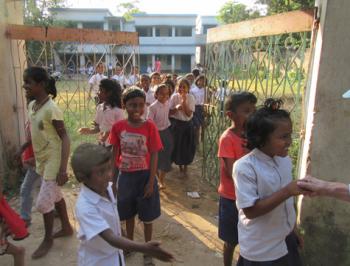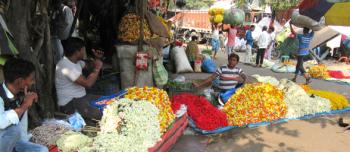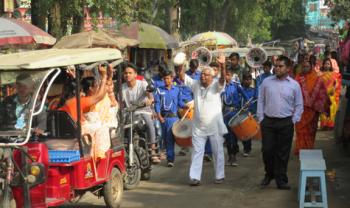Tips for first-time visitors to India
This item appears on page 14 of the April 2020 issue.
For those of you planning your first trip to India, this report provides supplemental advice based upon experiences my wife, Paula Owens, and I had on our trip. We don’t usually take tours, but India is a challenging place to visit on your own, so we ended up traveling there with Uniworld (Los Angeles, CA; 800/349-7397, www.uniworld.com), Nov. 21-Dec. 3, 2019.
These tips cover topics that were either not addressed or, more commonly, did not receive sufficient emphasis in the guidebooks and internet resources we consulted before our trip. These tips are only meant to complement your guidebooks; guidebooks contain a lot of useful information that is omitted here.
E-VISAS: Most travelers who plan to visit India must get an e-Visa in advance (including US citizens). Application rules and extensive details about e-Visas are available at indianvisaonline.gov.in/evisa/tvoa.html. However, after going online and reading about the problems travelers had on that website, we went through a visa service (March ’20, pg. 14).
JET LAG: When planning your trip, note that India — all of it — is 10½ hours ahead of Eastern Standard Time (and Daylight Savings Time is not observed), so factor in some time to recover from jet lag. Many flights from the US or Europe (you may be connecting there) arrive in India in the very early morning hours, between midnight and 4 a.m. We arrived at our New Delhi hotel at 3:30 a.m., two hours after our flight arrived at Delhi’s airport.
HOTELS: It’s an excellent idea to book a hotel room for the night before your scheduled arrival so you can access your room immediately upon arrival. I didn’t want to spend the money for this, but Paula insisted. She was right!
Our tour group stayed at Oberoi hotels (oberoihotels.com) in New Delhi, Agra and Jaipur. The New Delhi and Jaipur hotels were outstanding; the Jaipur property is a resort with extensive grounds. The Agra hotel didn’t measure up; it was a bit tired, and we felt the service wasn’t up to the very high standards of the other two locations. However, it is located very close to the Taj Mahal and is the only hotel with views of that world-famous attraction.
In some areas (including Agra), be sure to keep your hotel room’s windows secured. Otherwise, monkeys may enter your room and take and/or damage your belongings.
WHEN TO VISIT: The Taj Mahal was crowded during our shoulder season visit. Avoid visiting during the high season, if possible, but definitely go to the Taj Mahal if you can. Our tour thoughtfully included two visits, at sunset and sunrise, which is highly recommended.
At this and other attractions, there often are separate entry and exit turnstiles (and prices) for foreigners. The gatekeepers are very particular about visitors using the correct turnstiles.
HEALTH MATTERS: It’s a good idea to pack prescription medication for diarrhea. Our doctors prescribed Cipro; luckily, we didn’t need it.
We did require medication for respiratory problems. The air pollution, especially in Delhi, was often terrible. After a week, we (and many fellow tour members) developed coughs and scratchy throats. According to my doctor, the air pollution made our lungs more susceptible to the virus that we caught about halfway through the trip and which kept us coughing for three months.
Only bottled water should be used for drinking and brushing your teeth, even in the finest hotels. Avoid ice cubes and any drink that might include water. Before opening a bottle, ensure that it is actually sealed.
There are LOTS of stray dogs, especially in the cities. Few are aggressive, but do not approach them. (IAMAT lists the rabies vaccination as a “selective” option for people planning to visit India.)
By the way, if you’re a blood donor (as my wife and I each are), you won’t be able to donate blood for a year after your return home from India. This is the case with visiting many countries, especially those where malaria is present.
TRAFFIC: Road travel will take longer than you expect, especially in cities, primarily due to traffic. Cows will be everywhere, even sprawled out in the middle of busy streets and occasionally on highways. They are allowed to go where they want and are not to be interfered with.
Traffic backs up at toll gates on toll roads. That should improve once an E-Z Pass type of system is implemented (expected to occur “soon”).
Uber is available in many cities.
THE PEOPLE: Almost everyone you’ll need to communicate with in India can speak English, which will make your visit much less stressful.
The Indian people may stare and smile at you. According to our guides, they are just enjoying you.
Many people, especially children, seemed truly glad to see us. Children, and some adults, wanted to take selfies with us. Most children just wanted to talk to us, practicing their English, and shake our hands.
Even people living on the streets in abject poverty smiled at us and appeared to harbor no resentment toward foreigners like us who are, relative to them, incredibly wealthy. During our 2-week trip, we were approached by beggars (nonaggressive) only twice.
THE TOUR: On our 2-week “India’s Golden Triangle & the Sacred Ganges” tour, we started in Delhi and departed from Kolkata. The first half was on land. During the final week, we were on the Ganges Voyager II, sailing on a branch of the Ganges.
My wife and I each paid $5,104, which included the cheapest-class cabin for the cruise portion of the trip. (This price reflected a sale, a “returning guest” discount and an early-payment discount.)
This was the fourth trip we’ve taken with Uniworld. We had only a few complaints about the tour, which we passed on to the company, but overall it was a fine trip. I would definitely give Uniworld a “thumbs up.”
EPILOGUE: We’ve visited over 50 countries, but this trip was different. Going to India isn’t just, or even primarily, about seeing the sights. The most important aspect of spending time in India is experiencing the people and the culture.
India has many problems and distressing poverty, but most people we encountered gave every indication of being happier with their lives than the typical American is. We live in a land of plenty that’s filled with irate people. We should be able to learn something from how the Indian people live their daily lives.
Paula and I are still reflecting on our observations and experiences, looking for insights.
STEPHEN O. ADDISON
Charlotte, NC



